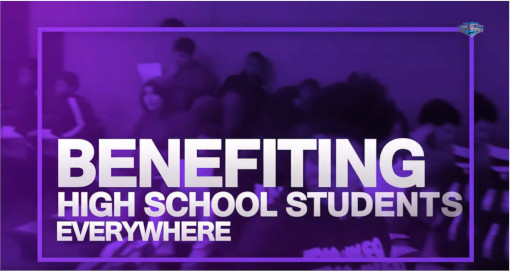
5 benefits this district got from K-12 esports
Posted by admin September 13, 2019 in , Esports GamingHigh School Esports5 benefits this district got from K-12 esports
K-12 esports could deliver more than just a new way for student athletes to excel–check out what happened when this district started its own competitive teams
Esports is booming, from K-12 right on up to college and at the professional level. As more districts start K-12 esports leagues of their own, the academic and social-emotional benefits become increasingly clear.
Roughly a year and a half ago, leaders in the Grapevine-Colleyville Independent School District (GCISD) in Texas, which has been 1:1 for 8 years, noticed the growing esports trend at the collegiate level. The district was already partnered with Dell for technology initiatives, prompting Kyle Bergerr, the district’s chief technology officer, to look a bit closer at esports’ relevance at the K-12 level.
“I felt like high school was about to explode in this,” he says. In the Dallas-Fort Worth area alone, he adds, there are four professional esports teams, leading lots of momentum to build around esports at the high school level.
“Is our job in education to prepare kids for the future–an unknown future? Can we do everything we can to help them get to the collegiate level? This was an untapped area,” Berger says. “We wanted to get a pipeline of kids into college for esports, just like athletics.”
Last fall, the district surveyed students to gauge their interest in esports. Based on that survey, about 50 percent of students said they might be interested. When all was said and done, Berger had 75 esports athletes between the district’s two high schools. Athletes were divided into teams and played games such as League of Legends and Rocket League.
Once the teams were set, Berger says the district worked with Dell to secure additional esports equipment, including Dell Alienware gaming machines.
K-12 esports impacts more than just game performance
Forming the esports teams led to some unexpected impacts in the district.
1. Students can envision career possibilities. Students who are part of a K-12 esports team choose a variety of majors and study paths once in college, but esports exposes them to fields of study such as business management and marketing. This helps them envision careers based on activities they truly enjoy, and it helps them connect their passions to real-world careers.
2. Girls feel more empowered. Last year, two girls played on teams, and this year the district plans to focus more on building up female esports participation.
3. Students become more engaged with their school community. Of the 75 esports players, 70 percent of them had never been involved in any other extracurricular school activity, Berger says, adding that when students are involved in activities such as clubs or athletics, their academic performance usually benefits.
“We captured a lot of kids who didn’t have anything else,” Berger says. “Maybe they weren’t the athletic type, or didn’t like band. But this is their thing. We also had some kids who were athletic but who were benched a lot, and this is something they could really be involved with.”
4. K-12 esports are very inclusive. “We started seeing other elements trickle in–a good percentage of our players have autism and are very skilled, but they haven’t had the ability to be involved in a school group. But they fit right into this group,” Berger says.
5. Students focus more on their academics and behavior. Esports isn’t currently regulated the way other school athletics are, but Berger says the district followed a traditional code of ethics structure to keep things similar to other athletics–esports players must pass classes, maintain a good disciplinary standing, and be an appropriate age to participate.
“That changed the dynamics for my kids,” Berger says. “In our first week, a student came in and was distraught because he received a D on a math test. He said in the past he wouldn’t have cared, but he wanted to play esports. We came up with a plan, which gave him a goal to work toward.”
What’s involved in esports play?
“There’s more than just sitting down and playing,” Berger says. “These things ar eintense. It really blew my mind.”
“Lots of our kids play video games online and they’re always communicating, so part of our program is building soft skills such as communication skills, at the same time reminding our athletes that they represent us as a school and a team.”
The program also includes fitness and nutritional training, which helps students regardless of their extracurricular participation.
All games are recorded so team members can review their game film and analyze how they and their opponents play, and they perform analytics reports on different opponents to find patterns based on previous game footage.
“It’s interesting to see their level of knowledge,” Berger says. “That’s what made us successful. We’re enabling student voice, and students are helping build the program with us. They’re helping us develop how the esports program will grow.”
Once the esports team got rolling, other students signed on to run the IT side of things, streaming games and managing technical operations.
“Our graphics classes are designing esports team logos and our traditional marketing classes are marketing the logos and the team.”
“There’s a lot more beyond the game, and that’s the key I tell people,” Berger says. “There’s the technical and streaming side of it, the marketing side of it, the broadcasting and analytics side, the coaching, and all the aspects of traditional STEM that fit directly into esports.”
The district’s partnership with Dell is enabling educators to develop an esports curriculum that will be available to students in the next couple years, Berger says.
What’s next for K-12 esports?
Next year, Berger says he expects at least 200 esports athletes to participate on district teams.
“Parents from other districts called asking if their students can transfer in. We also received calls from college recruiters saying they’d noticed a particular esports player and wanted to learn more about them,” Berger says. “This is the infancy of our program, but we really tried to push the word about it–and it’s just exploded from there. Kids are already doing this. Let’s meet the kids where they are. Isn’t that what we’re always trying to do?”
When it comes to recruiting more female players, Berger says the district is already working on some ideas:
1. Educators are reaching down into middle schools to try and catch girls’ interest early, before STEM interest typically peters out.
2. The high schools hold monthly “tech academies” for parents, and esports is highlighted during those academies–particularly for girls who are interested in playing.
3. Esports coaches also are working to connect with female pro esports athletes. Berger says the professional esports field is growing rapidly and athletes are very approachable. Some female athletes have reached out saying they’re interested in connecting with younger girls who may be interested in participating.
“I think the focus for us is to try and get more of those communications, meetings, and understanding for our female athletes,” Berger says. “And maybe if we’re not catching the right games they want to be involved in–where’s their level of interest? I’m really hoping our connection to pro female esports athletes will help energize these kids.”
The district is exploring more outside partnerships to buoy its K-12 esports programs, too.
“We’re working with a lot of companies on partnerships about how we can connect our kids to the industry in all sorts of fashions–not just gameplay,” Berger says. “For us, it’s really something to expand upon. It’s a team, and that’s important for our success.”
Source: BY LAURA ASCIONE, MANAGING EDITOR, CONTENT SERVICES, @ESN_LAURA
Latest Articles
- The eSports... Posted on May 17, 2024
- 🌟 Exciting... Posted on May 15, 2024
- Field Trip Fun at... Posted on April 9, 2024
- Premier of Story... Posted on
- 6 Benefits of... Posted on February 5, 2023








